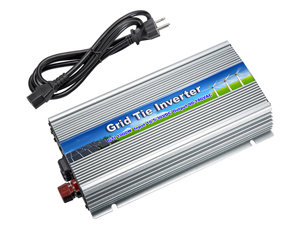The grid tie inverter is generally used in the system of large-scale photovoltaic power stations. Many parallel photovoltaic strings are connected to the DC input end of the same centralized inverter. Generally, 3 phase IGBT power modules with high power are used, and the power is relatively high. Small uses field effect transistors, while using a DSP conversion controller to improve the quality of the power produced, making it very close to a sine wave current.

The grid tie inverter module is to connect each PV module with an inverter, and each module has a separate maximum power peak tracking, so that the module and the inverter cooperate better. Usually used in 50W to 400W photovoltaic power stations, the overall efficiency is lower than that of string inverters.
Because it is connected in parallel at the AC side, this increases the complexity of the connection on the AC side and makes maintenance difficult. Another problem that needs to be solved is how to connect to the grid more effectively. The simple way is to connect to the grid directly through an ordinary AC outlet, which can reduce the cost and installation of equipment, but the safety standards of the power grid in various places may not allow it. In doing so, the power company may object to the direct connection of the power generating unit to the ordinary outlet of the ordinary household user. Another safety-related factor is whether an isolation transformer (high or low frequency) is required, or the use of a transformerless inverter is permitted.
On grid inverter features
- High efficiency is required.
Due to the high price of solar cells at present, in order to maximize the utilization of solar cells and improve the system efficiency, we must try to improve the efficiency of the inverter. - High reliability is required.
At present, the photovoltaic power station system is mainly used in remote areas, and many power stations are unattended and maintained, which requires the inverter to have a reasonable circuit structure, strict component selection, and requires the on grid inverter to have various protection functions, such as: input DC polarity reverse protection, AC output short circuit protection, overheating, overload protection, etc. - The input voltage is required to have a wider range of adaptation.
Because the terminal voltage of the solar cell varies with the load and the sunlight intensity. Especially when the battery is aging, its terminal voltage varies widely. For example, for a 12V battery, its terminal voltage may vary between 10V and 16V, which requires the inverter to ensure normal operation within a large DC input voltage range.
